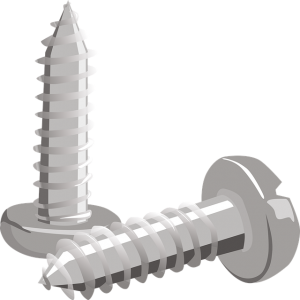
Screws are often manufactured using either thread forming or thread rolling. Both of these manufacturing processes involve the creation of threading, which is a defining characteristic of all screws. Screws have external helical ridges, known as threading, that allow them to dig into most materials. To create this threading, manufacturing companies typically rely on either thread forming or thread rolling. So, what’s the difference between thread forming and thread rolling exactly?
What Is Thread Forming?
Thread forming is a manufacturing process that involves the creation of internal threading. Internal threading, of course, is threading found inside of an object. With thread forming, a shaped tool known as a thread rolling die is pressed using a machine. When exposed to the pressure of a machine, the thread rolling die creates internal threading.
With thread forming, the screw itself isn’t necessarily modified or otherwise altered. Rather, the workpiece or object in which the screw is inserted receives the internal threading. The purpose of thread forming is to ease the difficulty at which screws are driven into a workpiece or object. Prior to installation, the workpiece or object will be machined with thread forming to create internal threading for the screw.
What Is Thread Rolling?
Thread rolling, on the other hand, is a manufacturing process that involves the creation of external threading. With thread rolling, a screw or similar fastener is machined to create external threading. The screw or fastener, without any threading, is pressed with a pre-shaped die. The die cuts away material from the screw’s exterior, resulting in the creation of external threading.
Thread rolling is a considered a cold-forming process, meaning it’s performed at or near room temperature. This is in stark contrast to hot-rolling processes, which involve the manipulation of heated metals and materials. Thread rolling is capable of creating all types of external threading. It can create small or large threading, and the specific characteristics of the threading can also vary. Regardless, thread rolling is a machining process in a screw or fastener is manipulated to create external threading.
There are actually four types of thread rolling, including the following:
- Flat-die thread rolling
- Two-die cylindrical thread rolling
- Three-die cylindrical thread rolling
- Planetary-die thread rolling
In Conclusion
Thread forming and thread rolling, while both involving the creation of threading, aren’t the same. The primary difference between them is that thread forming is used to create internal threading, whereas thread rolling is used to create external threading.
No tags for this post.